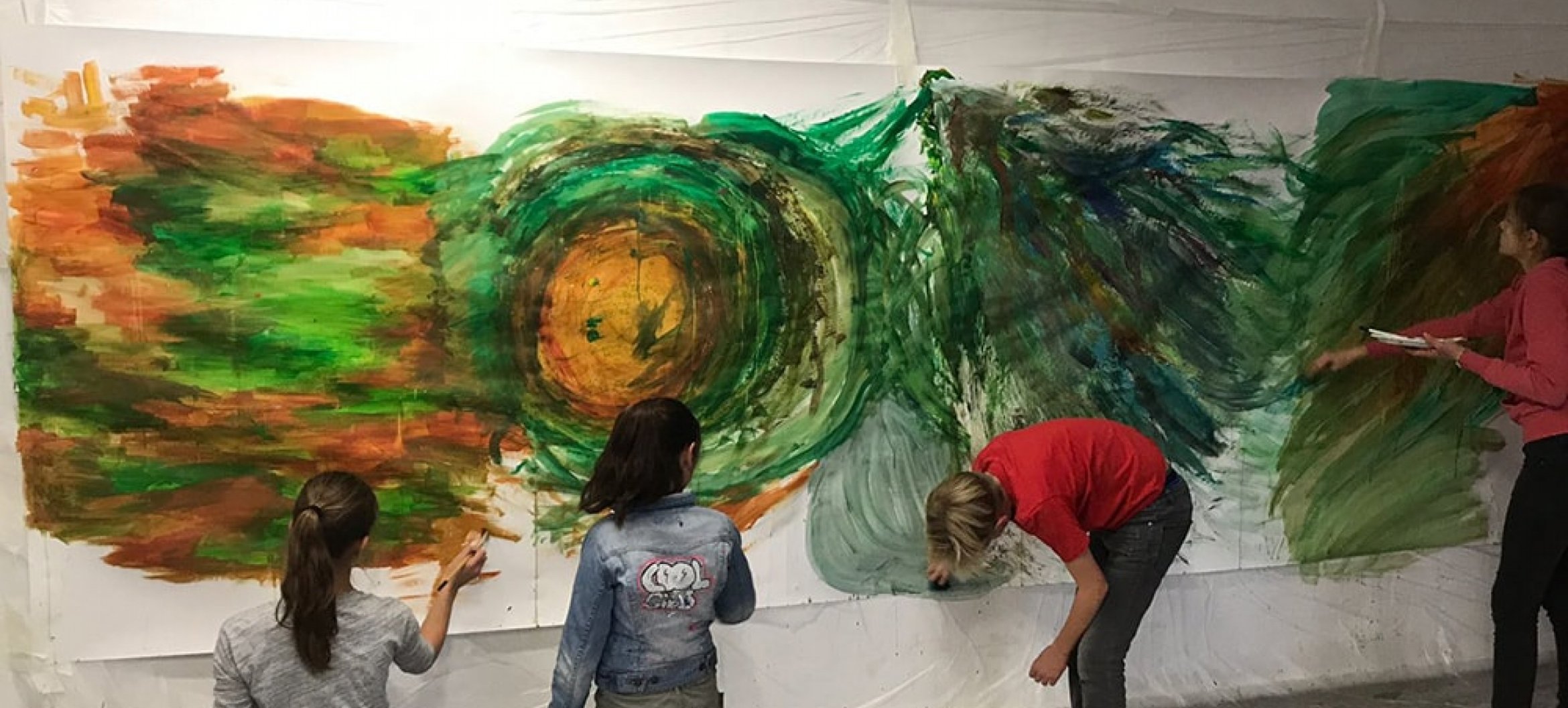Controversial art in year 4
The first secondary school class Hannah Willemsen taught after gaining her diploma was ‘deep down’ in the Achterhoek region. The challenge for the brand-new Fine Art and Design in Education graduate was to make her pupils, with their sheltered upbringings, enthusiastic about art – and controversial art at that.

"The pupils at my school come from families in the countryside, from small villages. For these children it is especially important that they start asking questions and forming their own opinions. My view is that they generally have rather sheltered upbringings and that the school has a tendency to want to holds their hands."
Art that makes you uncomfortable
Hannah recognises that because she grew up in a village herself. “That small, protected, bourgeois atmosphere and the rules that go with it. On the Fine Art and Design in Education course, they told me that I should spread my wings and move out of my home village. Not that I followed their advice straight away, but it did broaden my perspective on art and the world. And I want the same for my pupils: for them to become acquainted with art that is a bit left-field, that makes you think and makes you uncomfortable."
It takes some courage to introduce pupils to controversial art straight away. Where do you find that courage in the early days of your teaching career? Hannah: "During my teacher training internship, I was able to practice teaching in a relatively safe context. It was OK to make mistakes. You get intensive support from supervisors at the internship school and from the course. You try things out and continually reflect on them: what went well and where is there room for improvement? I see the internship as a real testing ground where I was genuinely able to develop. Now I'm no longer afraid to make mistakes. I have the confidence to be vulnerable."
Why should art always be cheerful?
“For instance, I felt OK about showing the class a documentary about the artist Jordan Wolfson. Pupils find his work shocking, with those robot-like mannequins being thrown around a room. You might wonder whether a documentary like that would be too boring for them, but I think pupils in year 4 of upper general secondary education (HAVO) should be able to cope with it. Plus I alternate watching the documentary with an activating assignment. I put big sheets of paper on the table and ask the pupils to write down or sketch meanings, associations, ideas and feelings the work evokes in them. We talk about the art world and how it works, the conceptual approach, the fact that art doesn't necessarily have to be nice to look at. I'll discuss that with the whole class in order to set in train a process of increased awareness: why should art always be cheerful?
Discovering and investigating for yourself
Hannah never comes to school unprepared: "I never simply stand in front of the class and come up with something on the spot. That would result in boring and meaningless lessons. On the course, we are trained to vary our lesson formats. When pupils start investigating for themselves, the education takes on new interest for them. I find that I enjoy contributing information and inspiring them. But discovering, devising and investigating for themselves remain important."
Because as well as becoming acquainted with art, sometimes controversial art, pupils need to be empowered to make a big contribution to the creative process themselves. They need to be able to express themselves and put forward their opinions about art, believes Hannah: "You need to be clear about what you expect of your pupils. I have a formal template and within that I give them a lot of freedom. That works well for a year 4 HAVO class with 18 boys who have no connection with art. It's great to see pupils starting to look at things closely and interpret them thoughtfully. For instance, one pupil linked the theme of reincarnation and life to a work by Escher. The fact that he came up with that himself, at that age, while claiming not to be interested in art… That makes me happy!"


